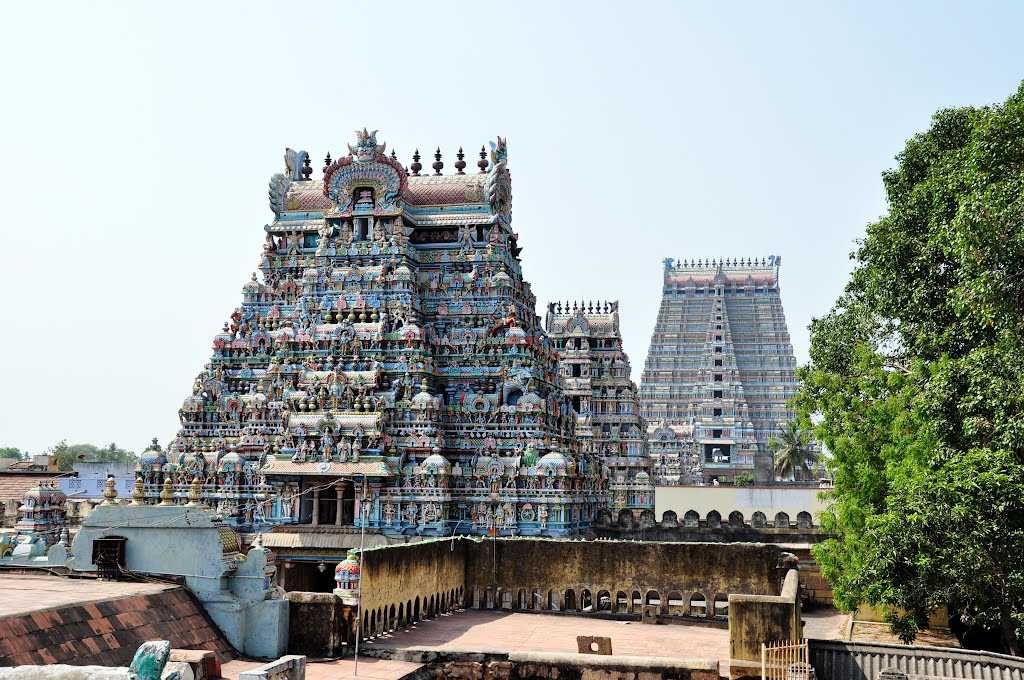The Jambukeswarar Temple, located in Tiruchirappalli (Trichy), Tamil Nadu, India, is a renowned Hindu temple dedicated to Lord Shiva. Situated on the banks of the Kaveri River, this ancient temple holds great religious significance and is one of the Pancha Bhoota Stalams, representing the element of water (Jala). The temple is named after the presiding deity, Jambukeswarar, who is worshipped in the form of a lingam (an abstract representation of Lord Shiva) submerged in water.
The history of the Jambukeswarar Temple dates back over two millennia, with references to the temple found in ancient Tamil literature and inscriptions. According to legend, the temple was originally built by the Chola king Kochengat Chola I in the 2nd century CE, although it underwent significant expansions and renovations under the patronage of various dynasties, including the Pandya, Chola, and Vijayanagara rulers.
The architecture of the Jambukeswarar Temple is a fine example of Dravidian temple architecture, characterized by its towering gopurams (gateway towers), pillared halls, and intricate carvings. The temple complex is laid out in a unique quadrangular shape and is surrounded by massive walls adorned with elaborate sculptures and decorative motifs.
One of the most distinctive features of the Jambukeswarar Temple is its sacred water tank, known as the “Sarovar,” which is believed to have been created by the divine serpent Adisesha. The tank is fed by natural springs and is considered to have healing properties, with devotees taking holy dips in its waters to cleanse themselves of sins and ailments.
The sanctum sanctorum of the Jambukeswarar Temple houses the main deity, Lord Jambukeswarar, in the form of a lingam submerged in a pit filled with water from the Kaveri River. The lingam is worshipped with great reverence by devotees, who offer prayers, rituals, and offerings to seek the blessings of Lord Shiva.
The Jambukeswarar Temple is also famous for its annual festival, known as the “Theppam Festival” or “Float Festival,” which is celebrated with great pomp and splendor. During the festival, the deity of Lord Jambukeswarar is taken out in a procession on a beautifully decorated float and is worshipped amidst chanting of hymns and devotional music.
In addition to its religious significance, the Jambukeswarar Temple is also a center of cultural and spiritual heritage, with its intricate carvings, ancient inscriptions, and vibrant festivals attracting thousands of devotees and tourists from all over the world.
Overall, the Jambukeswarar Temple is not only a place of worship but also a symbol of devotion, tradition, and spirituality that continues to inspire awe and reverence among devotees and visitors alike. Its timeless beauty, sacred ambiance, and rich history make it a must-visit destination for anyone seeking solace, enlightenment, and a deeper connection with the divine.

